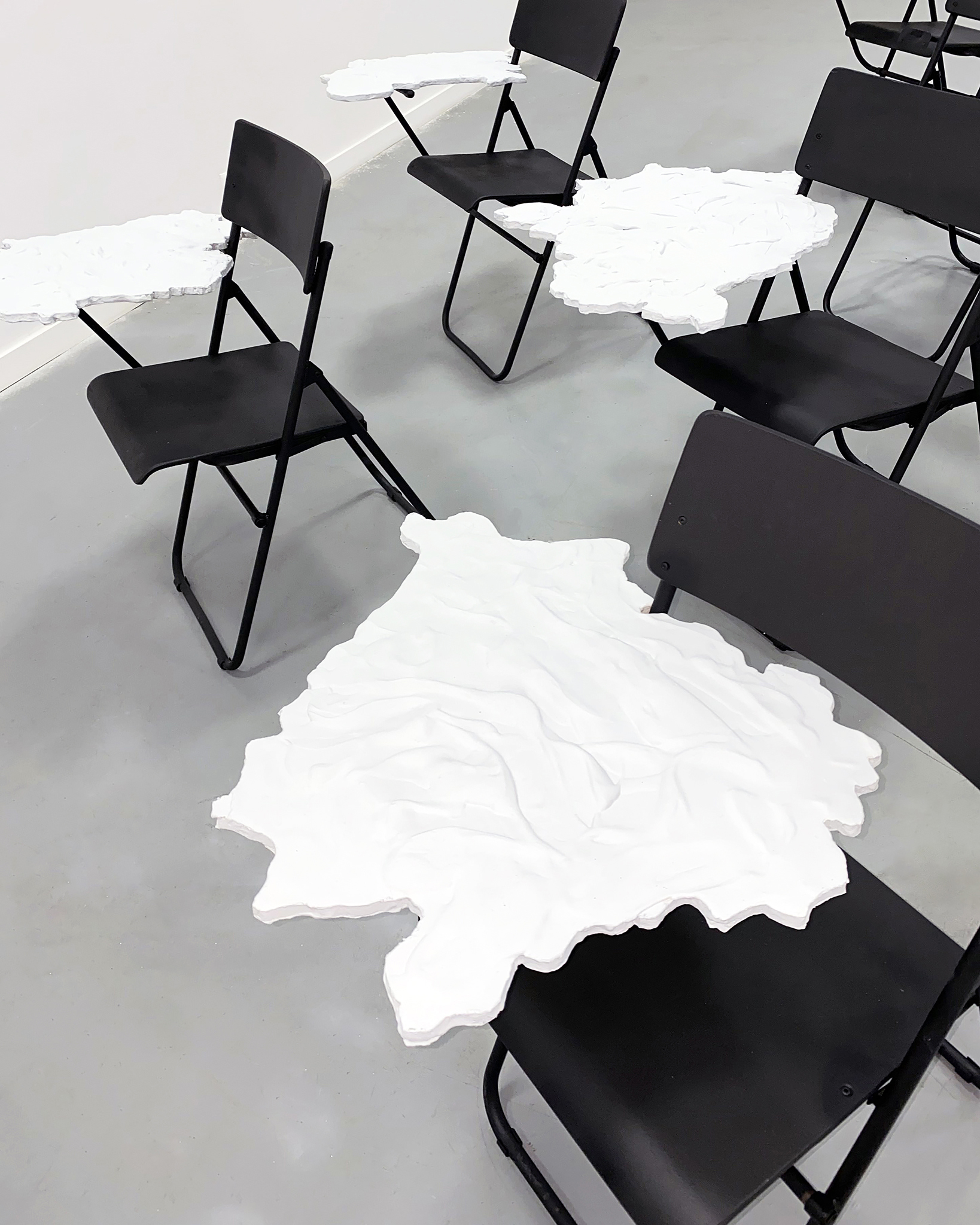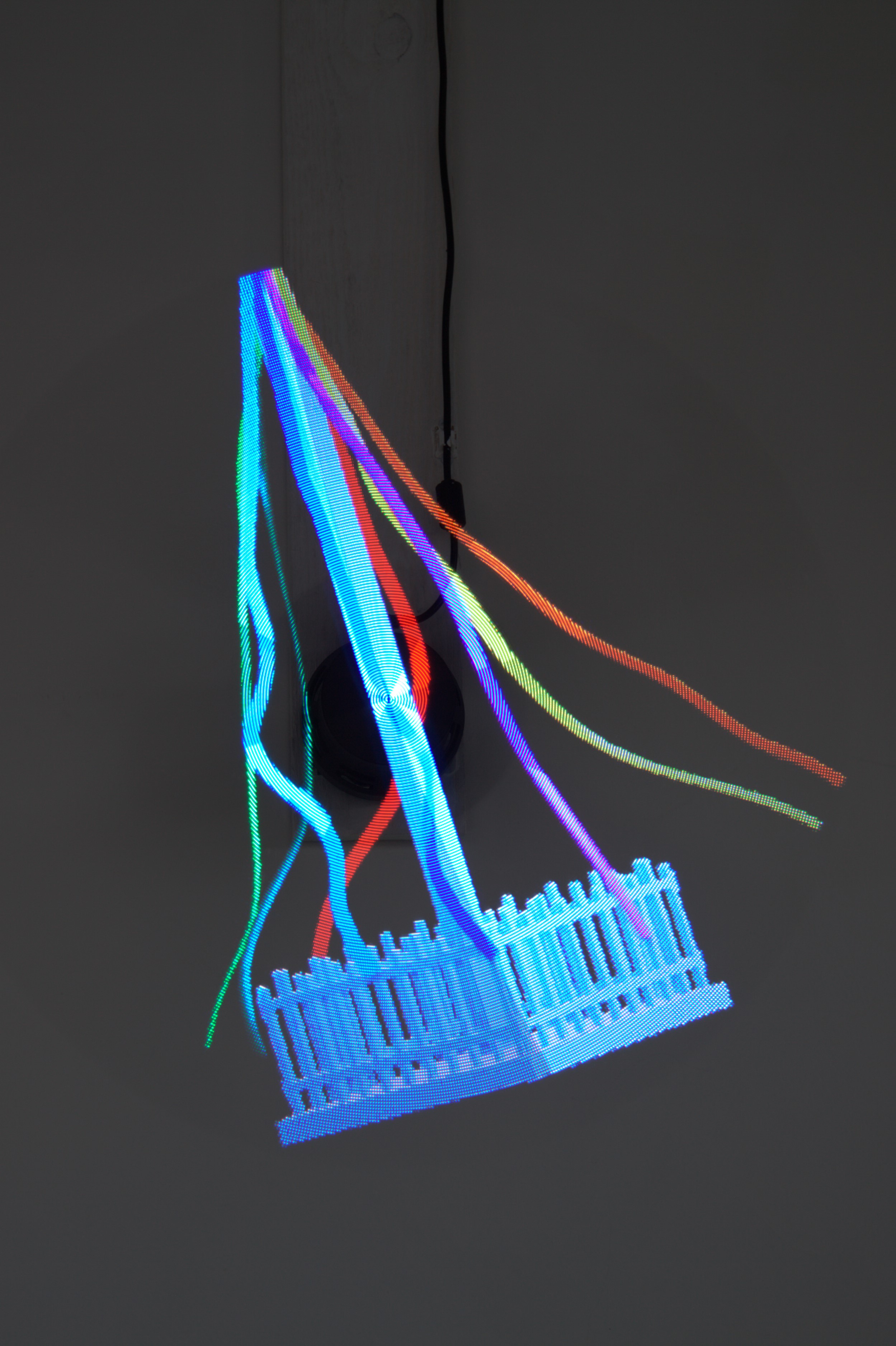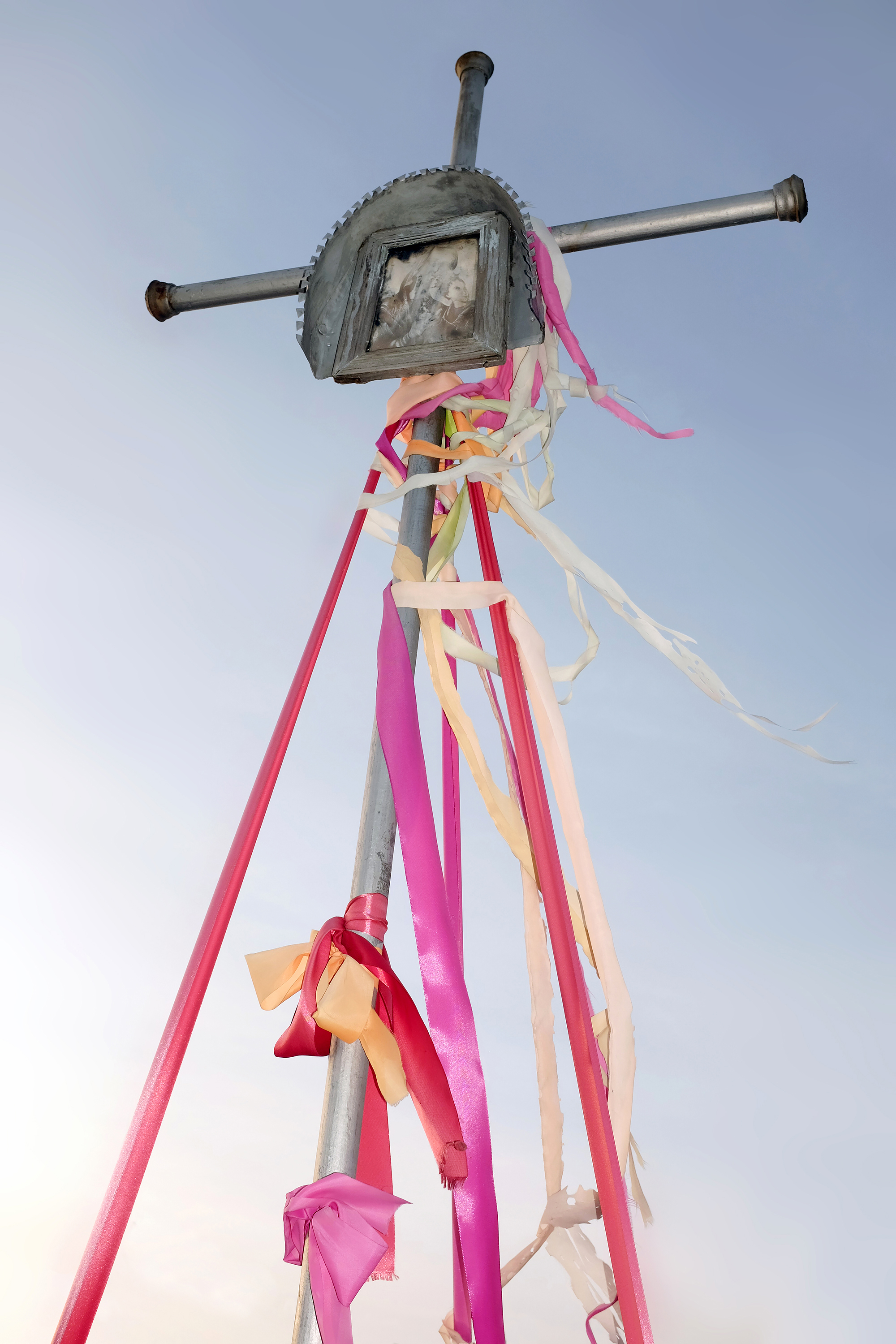Try to Read My Stones
InstallationROADSIDE objects
Photos, fine arts print2020 - 2024
BORDER PROTECTION

ROADSIDE objects

Installation: nine school desks with maps and seven photographs
MOS (Municipal Art Center). Gorzów Wielkopolski, 2023
Lesia Pcholka's Roadside series of photographs is inspired by Mikhas Ramanyuk's iconic monograph Belarusian Folk Crosses (2000), a seminal work in local art history. Ramanyuk's book is the culmination of 30 years of meticulous research and documentation of Belarusian funerary and sacrificial crosses, which serve as a testament to the uniqueness of local culture. The crosses, typically placed by the roadsides of villages or at crossroads, were intended to protect people from epidemics, wars and natural disasters. These objects seamlessly blend elements of both Christian and pagan beliefs, a characteristic feature of Belarusian spirituality.
In an effort to verify the knowledge she had acquired during her artistic training, Pcholka travelled to the sites described and depicted by Ramanyuk in Belarus. She discovered that many of the crosses so carefully documented by the researcher had been dismantled or destroyed by the forces of nature. However, in keeping with tradition, new crosses had been erected in place of those that had disappeared. These new structures are richly decorated by the local people, reflecting their individual knowledge, beliefs and aesthetic preferences. Their eclectic appearance, enhanced by the use of contemporary, vividly colorful materials, gives them an almost queer look.
The Roadside series aims to emphasise that heritage is not static, but a dynamic form of communication. Pcholka continues the relevance of Ramanyuk's black and white documentation in representing modern Belarusian culture. It suggests that in order to truly understand ourselves, we must continually seek new ways of engaging with the past. This ongoing dialogue with history, reflected in the ever-changing forms of these crosses, underlines the need for a living, evolving approach to cultural heritage.

Installation: metal structure, satin ribbons and two photographs
Brno House of Arts. Brno, 2021
The work Try to Read My Stones devoted to the ways of marking space in Belarus, a countrywhose borders have changed many times throughout history, even in the course of the 20th century, the period from which mostof the photographs in the VEHA archive come. The work Try to Read My Stones, presents 9 maps of Belarus embedded in schoolchairs, referring to the history of the aforementioned century (1918, 1918-1919, 1919, 1920-1921, 1922-1924, 1924-1927, 1938-1940, 1941-1945). The changeability of the borders is the resultof the geopolitical transformations that took place in Belarus inan exceptionally dynamic and cruel way (multiple changes of power and political systems, wars, etc.). These processes could notbut leave a strong imprint on the local culture and the fate of thepeople. One such manifestation is the eclecticism of visual culture, the tendency to freely combine meanings and cultural images.

Try to Read My Stones

MOS. Municipal Art Center. Gorzów Wielkopolski, Poland
Daily life is full of rituals and things related to them which are constantly dying or changing. Similarly, roadside crosses are part of these rituals. Being strangers to the landscape and as if hanging in the air, these crosses emphasize their alienation and timelessness. Usually being swept past on the roadsides, now these objects freeze and stay on their own, focusing the gaze on their otherness and estrangement, like aliens. To allow them become something more than ritual objects, to let them be seen, to elude power of the landscape.
![]()
video, on 3D projector
Copenhagen Photo Festival, 2024

video, on 3D projector
Copenhagen Photo Festival, 2024




︎︎︎ KX GALLERY digital gallery. IN PAIRS Roadside Sites with Alesia Zhitkevich / curated by Lizaveta Michalchuk, 2021
︎︎︎ Magazyn Szum. Niech świeci. Wokół fotograficznego archiwum VEHA w Miejskim Ośrodku Sztuki w Gorzowie Wielkopolskim, 2021
︎︎︎ Magazyn Szum. Niech świeci. Wokół fotograficznego archiwum VEHA w Miejskim Ośrodku Sztuki w Gorzowie Wielkopolskim, 2021